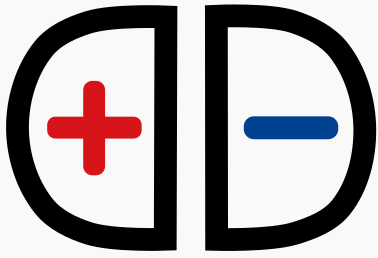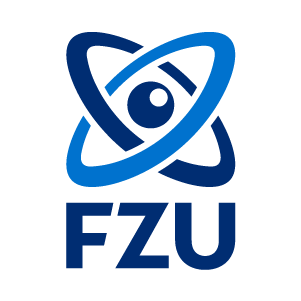Solid-state materials science
Project no. 101040057, EU-Horizon Europe, ERC-STG
2D sandwiches, artificial layered building blocks for multifunctional materials (2D-sandwich)
T. Verhagen, (2022-2027)
(show abstract)
The ERC project will provide material design strategies that can remove the stringent lattice
matching criteria to stack different classes of layered materials and
provide these class of layered materials with similar stacking freedom as layered materials
with vdWIs. These insights will allow the interbreeding of different classes of layered
quantum materials, such as complex oxides, 2D layered crystals with vdWIs,
cuprate superconductors or topological insulators or semimetals.
The possibility to create new materials bottom-up was enhanced via the stacking of atomically
thin layers of two-dimensional (2D) materials with van der Waals interactions (vdWIs).
Unfortunately, the downside of vdWIs is the, in general, weak electronical and mechanical interaction
between the individual layers. This hinders the creation of multiferroic materials working
at ambient conditions, which are despite extensive research still very scarce, from stacked layers with vdWIs.
This research aims to create a new 2D building block: the 2D sandwich.
This is a layered heterostructure with a strong interaction between the sandwich's individual layers
mediated via an ionic or multivalent bond, whereas the interaction with other layers is still
solely due to the vdWIs. As the prototype functional material, a 2D magnetoelectric multiferroic
sandwich composed of layered transition metal chalcogenides, oxides or iodides will be grown using
the modulated elemental reactants method.
To tackle the possible sample degradation in the sandwiches,
ultra-high vacuum optical surface science spectro-microscopy techniques will be developed to
optically probe the 2D multiferroic sandwiches for both magnetism, ferroelectricity and
the coupling between them. The concept of open samples will be introduced,
facilitating the scientific community with the straightforward verification of the data and
accelerate the development of this new class of 2D sandwiches.
This project will provide material design strategies that can remove the stringent lattice
matching criteria to stack different classes of layered materials and
provide these class of layered materials with similar stacking freedom as layered materials
with vdWIs. These insights will allow the interbreeding of different classes of layered
quantum materials, such as complex oxides, 2D layered crystals with vdWIs,
cuprate superconductors or topological insulators or semimetals.
(hide abstract)
Past projects:
Project no. 20-01570S of the Czech Science Foundation
Improved osseointegration of bone implants with the use of ferroelectric coatings
P. Vaněk, (2020-2022)
(show abstract)
Ageing of the population has led to an increasing need for bone and joint tissue replacements.
Novel types of alloys have been developed, together with modifications to the physicochemical properties
of the surface to accelerate the osseointegration of bone implants.
The creation of electrically-active surfaces is a promising approach.
The aim of the project is to provide solutions to problems of osseointegration that
often arise in orthopaedic surgery.
Permanent bone implants from titanium alloy (screws),
including 3D-printed titanium with a trabecular structure,
will be covered with electrically-active surfaces to support osseointegration of artificial materials
into the bones. The osteogenic potential of the ferroelectric layers will be tested in vitro
(in static culture and using mechanical loading of the samples seeded with bone-derived cells).
Markers of cell adhesion, growth and differentiation will be evaluated.
The most promising coating will be tested in vivo. The implants will be inserted into the femur of miniature pigs,
and histological analyses will be performed.
(hide abstract)
Project no. 15-01558S of the Czech Science Foundation
Electroactive films on titanium alloy substrates for surface modification of bone implants
P. Vaněk, (2015-2017)
(show abstract)
The biocompatibility of materials for hard tissue implants is under intensive investigation nowadays.
We propose to provide improved biocompatibility by using the influence of an electric charge on the living system.
As substrates for thin ferroelectric layers, we will prepare promising Ti alloys (without suspect components,
and preferably as thin coatings). Substrates with excellent corrosion resistance will be characterized by mechanical,
chemical and tribological tests. The surface of these Ti alloys will be covered by a spontaneously
polarized ferroelectric film (BaTiO3, K(Ta,Nb)O3, etc. in single phase or composite form),
with an electric charge on the surface. Mechanical, tribological and dielectric properties
important for bioapplications will be tested. The project is based on determining
the impact of the overlayer properties on the adhesion, growth, differentiation
and viability of osteogenic cells in vitro. We will estimate the possible immune activation
of cells growing on the material and the potential genotoxicity of the material.
(hide abstract)
Project no. 14-05506S of the Czech Science Foundation
Crystal engineering of novel molecular crystals for non-linear optics
J. Kroupa, (2014-2016)
(show abstract)
The project utilizing up-to-date crystal engineering approaches is focused on the field of material
research of crystalline compounds for non-linear optics (NLO). The applied approach for the
preparation of novel molecular crystals - potential second harmonic generators - is based on the
selection of organic heteroaromatic bases as molecular carriers of NLO properties.
This selection will be based not only on quantum-chemical computations but also on experimental
verification of NLO properties in solutions. The consequent step will be preparation
of derived non-centrosymmetric crystalline materials – i.e. hydrogen bonded salts and cocrystals.
The detailed characterization of obtained materials will be performed by the combination of diffraction,
spectroscopic, optical, calorimetric and computational methods. Finally, bulk single crystals of
promising materials will be grown with the respect to the finalization of NLO properties determination
for potential technical applications.
(hide abstract)


